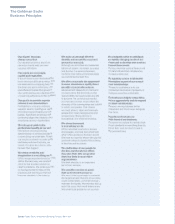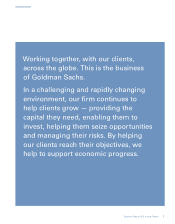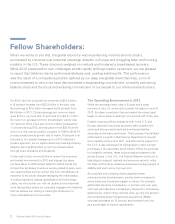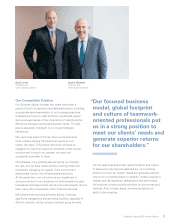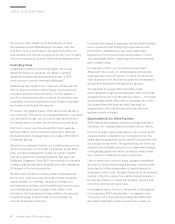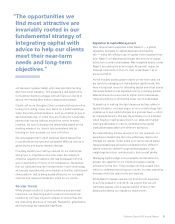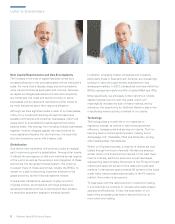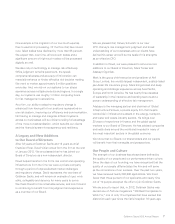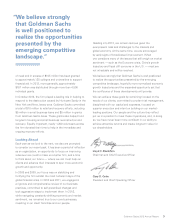Goldman Sachs 2012 Annual Report Download - page 7
Download and view the complete annual report
Please find page 7 of the 2012 Goldman Sachs annual report below. You can navigate through the pages in the report by either clicking on the pages listed below, or by using the keyword search tool below to find specific information within the annual report.
5Goldman Sachs 2012 Annual Report
Regulation & Capital Management
New requirements expected under Basel 3 — a global
regulatory standard on capital adequacy and liquidity
risk — make the efficient use of capital more important than
ever. Basel 3 will significantly impact the amount of capital
attributed to certain businesses. Risk-weighted assets under
Basel 3 are estimated to be roughly 40 percent higher for
financial institutions in the U.S. than under Basel 1 as of
the end of 2012.
As the industry awaits greater clarity on the final rules, we
are carefully managing our risk-adjusted capital levels. We
have a long track record of allocating capital and other scarce
resources based on risk-adjusted returns, providing greater
balance sheet and resources to higher return businesses
while downsizing or eliminating lower return businesses.
To assist us in making the right decisions as they relate to
capital allocation, we have begun to roll out technology that
enables us to see capital charges at a granular level — often
by individual security. We use the software to run analyses
when buying or selling securities in our sales and market-
making businesses in order to understand the capital
implications associated with different scenarios.
By understanding the key drivers of our risk positions, our
securities professionals can more effectively deploy and
manage our capital. It also helps us to serve clients better.
Sales professionals can better understand how different
clients consume capital through added exposure, risk
weightings and other contributors to their overall profile.
Managing capital usage more precisely can translate into
greater risk capacity for our clients and greater capital
efficiency for the firm. This provides not only a basis from
which to understand and improve returns, but also operating
leverage when the opportunity set expands.
While Basel 3 capital rules are not final and not expected
to be fully phased in until 2019, we expect that we will
ultimately operate with a capital cushion of about 100
basis points above our regulatory requirement.
will discuss in greater detail, will mean less bank lending
and more bond issuance. This presents a real opportunity
for Goldman Sachs to engage with and help our clients to
secure the funding they need to expand and prosper.
Clients call on us throughout their company’s lifecycle when
looking for funding, when they debut on a public exchange,
when they face critical decisions, such as whether to buy or
sell a business line, or when they are looking for a business
partner that may be halfway around the world. In every
instance, we look to develop the relationship based on the
evolving needs of our clients, and understand that by
focusing on their success, our own will follow.
We are pleased that in 2012 Goldman Sachs ranked first
in worldwide announced and completed M&A as well as in
global equity and equity-related offerings.
Providing liquidity and making markets for our clients has
also grown in importance at a time when the industry’s
collective capacity to assume risk has decreased with the
exit or downsizing of many of our competitors. We believe
that our early and long-term investments in both technology
and people have allowed us to maintain a first-tier institutional
client platform that is being scaled efficiently for increased
volumes and reduced transaction costs for our clients.
Secular Trends
While always mindful of cyclical conditions and potential
outcomes, we have long been focused on the structural
trends that will have long-term effects on economies and
the underlying structure of markets. Regulation, globalization
and technology are especially significant.
“The opportunities we
find most attractive are
invariably rooted in our
fundamental strategy of
integrating capital with
advice to help our clients
meet their near-term
needs and long-term
objectives.”


